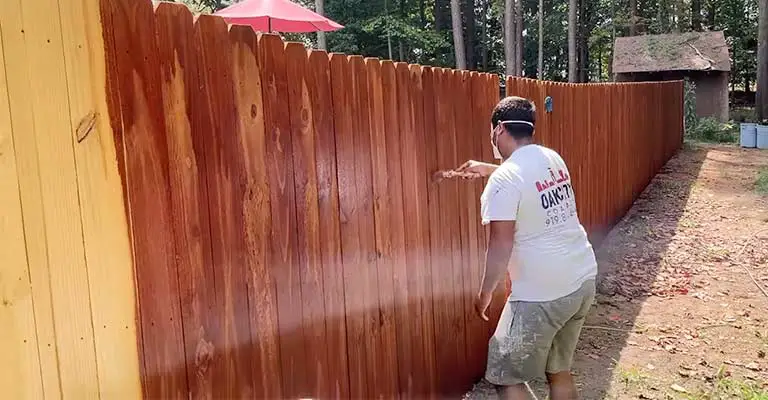Your final ‘aesthetic’ choice will come after you have completed the installation of your new wooden fence. What should you do with your unfinished fence?
Should you paint it a bright color, stain it to give it a more natural look, or go for a more natural look with an unfinished fence? Is staining your fence worth it?
For most fence finishes, a stain is the best choice. Although stains are more expensive than paint initially, they last much longer and require much less maintenance.
The cost of maintaining your fence will be lower over time since you won’t have to touch it up nearly as frequently.
You can choose solid stains that offer a wide array of colors. It’s also a good idea to use semi-transparent or clear stains if you simply want to maintain the natural appearance of the wood.
A fence can be stained for a variety of reasons. In addition to providing protection, fence stains can also enhance the look of wood fences.
The long-term savings can be significant. Short-term maintenance does increase with staining a fence, however.
My experience as a fence stainer has given me a good idea of the pros and cons of staining fences. Because I think the pros outweigh the cons, I chose to stain the fence in my backyard.
There Are Many Benefits To Staining A Fence
Several benefits can be gained from staining a fence. Due to its natural properties, wood is susceptible to degradation by the environment. Over time, this leads to the fence deteriorating and eventually needing to be replaced.
Due to the rising price of lumber, anything that will extend the life of your fence can save you a great deal of money. Listed below are the top benefits of staining your fence.
1. Increasing The Value Of A Home
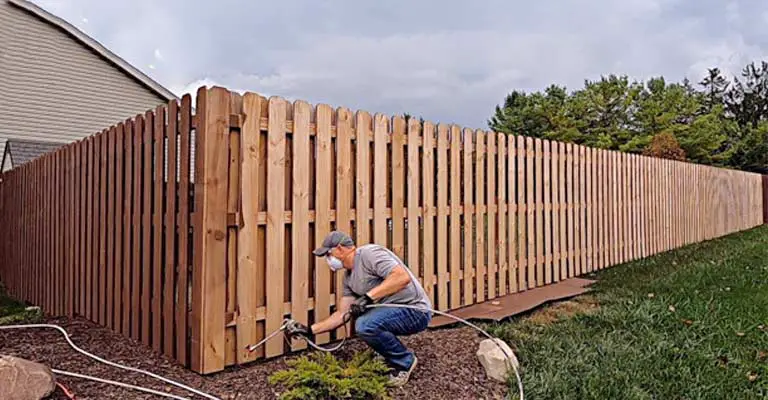
It is more likely that a home will have a higher resale value if it is in good condition. You can enhance the look of your home by maintaining your fence with fence stain.
On the other hand, a falling fence can give the impression that your house has not been properly maintained.
2. Protection From the Elements
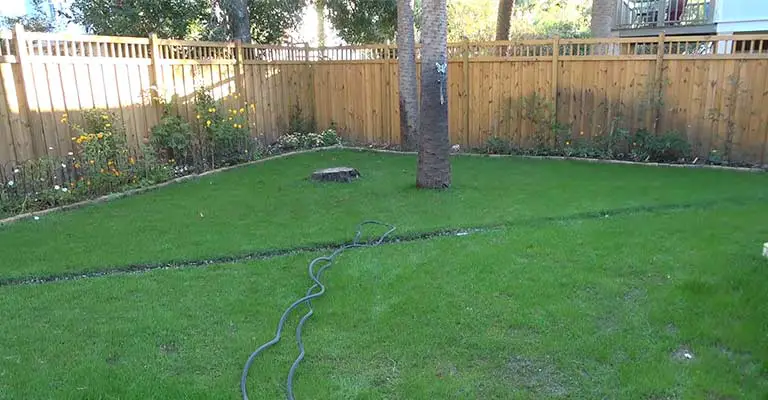
In addition to environmental factors, wood fences are damaged by many other factors as well. Aside from turning gray and looking unsightly, this damage damages the wood’s natural beauty.
In addition to rotting the fence, it can also lead to it falling apart. In most cases, wood rot is caused by water. Keeping moisture out of the wood will protect it from decay and make it last longer.
3. Staining Stops Potential Rot
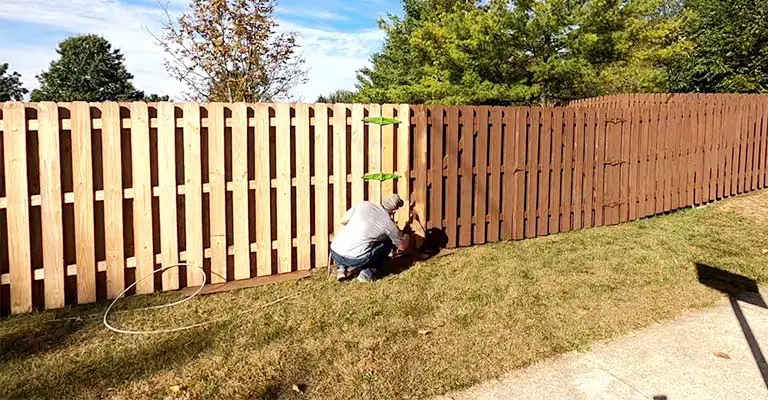
The best way to prevent wood from rotting is by staining it. The air that comes into contact with exposed wood can be moist, which can lead to mold and bacteria growing.
Wood rot develops over time, eventually destroying your entire fence. It is important to stain wood in order to prevent the fence from rotting or growing.
4. Maintains The Fence’s Appearance
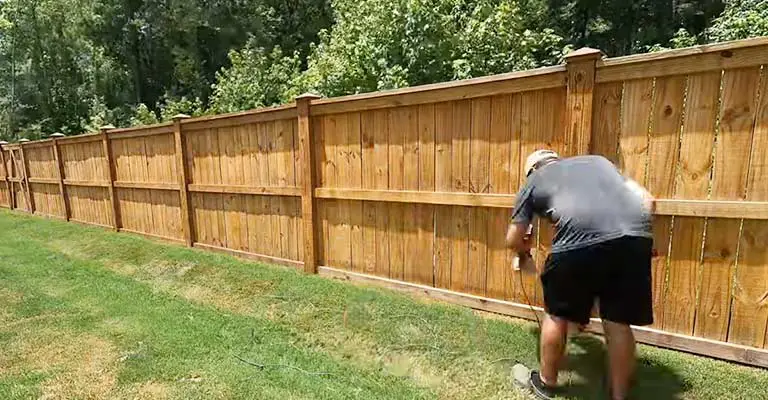
If a fence is not protected from the elements, it will quickly begin to deteriorate. When exposed to the elements, wood will naturally turn gray.
Several factors damage the outer layer of wood cells, such as UV rays, humidity, and mildew growth.
The right fence stain will provide protection from these factors and prevent the gray color from developing. The fence will look beautiful for a long time if it is stained well.
5. Cost Savings In The Long Run
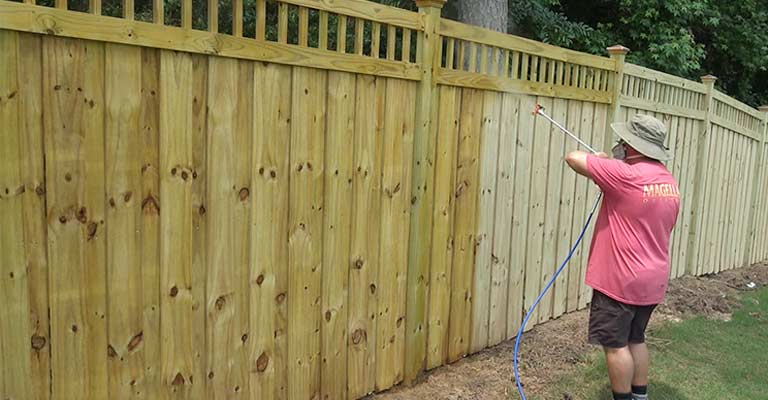
It is possible to extend the life of a fence by staining it. Consequently, your fence will not need to be replaced as frequently.
I’ve seen prices range from $25 to $40 per foot to replace a wooden fence. If you keep your fence stained, you’ll avoid having to replace it at a very high cost.
6. Anti-Bug Properties Of Staining

All kinds of insects love unsealed wood because it is a natural material. The majority of these animals are interested in wood as a source of food or shelter, and both will ultimately result in fences falling down.
You can stain any part of your fence to prevent bugs from chewing on it, and you will keep them from nesting anywhere near the wood if you stain it.
7. UV Protection Is Provided By Staining
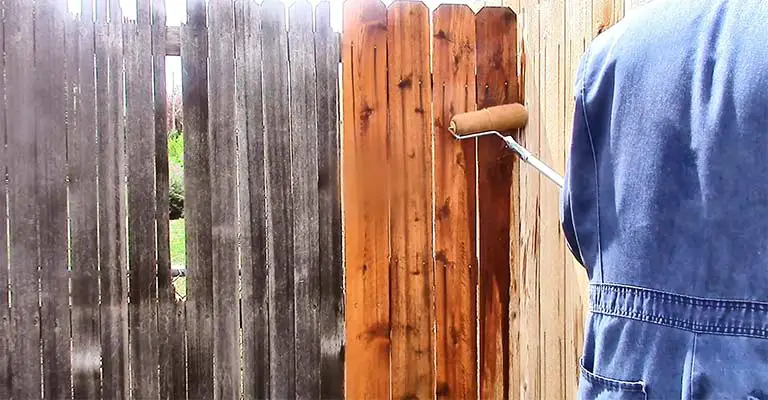
The natural property of wood is that it does not like to be exposed to too much heat or ultraviolet radiation.
When too much sun hits a painted fence, it may crack, fade, and weaken, while an unstained natural wood fence can dry out and become damaged.
It is recommended that you coat your fence with a good quality wood stain to protect it from UV damage, as well as from drying out or cracking in the sun.
8. Staining Reduces Glare
When a fence is stained, it reduces glare, which is caused by harsh light bouncing off of certain surfaces. In brighter light, glare is difficult to see, and you may be more likely to cause an accident as a result.
By staining wood instead of just reflecting light, the grain of the wood can be seen, and the light will be absorbed instead of reflected.
Fence Staining Cons
It’s not only the pros of staining a fence that you should consider before you commit, but the cons as well.
In spite of the fact that stains can be removed from a fence, the process is difficult and expensive. Staining a fence comes with several drawbacks, so make sure you understand them before proceeding.
1. Commitment For The Long Run
If you decide to stain your fence, you should consider it as a permanent investment. It is possible that the stain will interfere with the new coating if you decide to paint the fence in the future.
Fence stains can be removed, but the process is time-consuming and expensive.
2. The Need For Greater Short-Term Maintenance
You will need to reapply fence stains about every two to five years. Staining is, therefore an ongoing commitment to fence maintenance.
Staining a fence but failing to maintain it can lead to a fence looking worse than one that has never been stained.
It is important to remember that fences need to be maintained regardless of whether they have been stained. Even though staining a fence increases its short-term upkeep, it saves you from long-term and costly replacement costs.
3. Costs Are Higher Up Front
The cost of staining a fence yourself will depend on how long it takes. Staining a new fence may seem like an unnecessary expense if you have already paid to install it.
Natural Wood And Painting Are Two Alternatives To Fence Staining
Wood can be preserved in other ways than staining. Another option is to paint the wood to protect it from moisture while making it look great. Leaving the fence natural and letting it age is the only other option.
The Pros And Cons Of Fence Paint Vs. Stain
Choosing paint for a wood finish will give you the white picket fence of your dreams. Painting a fence may be a better option than staining it for other reasons.
The Pros Of Painting A Fence
Coats That Last Longer
A paint coat should last longer than your average stain coat when painted correctly. If two coats of paint are used and primer is used, this assumes it’s painted correctly.
Unlimited Color Options
Any shade of paint can be used to paint a fence. Manufacturers of major paints offer thousands of colors. Meanwhile, stains are available in a limited number of colors.
The Cons Of Painting A Fence
It Is Difficult To Maintain
Keeping paint looking good for a long time is more difficult. It is common for paint to crack and flake off over time. Putting on a new coat of paint requires scraping and sanding if you want to keep the fence smooth.
Upfront Costs Are Higher
A fence that is painted correctly requires more labor and more materials than one that is stained. If you want your paint to last as long as possible, you should use a quality primer.
Two coats of high-quality exterior paint should be applied after the primer. A total of three coats of paint is usually required, whereas a single coat is usually necessary for stains.
Final Words
Finally, if you prefer the rustic look of an unfinished fence and want to let nature take its course, your fence can be left as is.
There will be fewer costs initially and no maintenance required with the natural look. The elements can damage your fence over time, however, since you expose it to the elements.
Having said that, natural rustic décor is a trend for a reason. The life expectancy of quality wood is quite long, and it always looks great.
Besides staining your natural fence or painting it down the road, you can easily prepare it for a new finish. Changing the color of your property can give it a much-needed makeover.
For most fences, I recommend staining them. I find that painting looks beautiful initially, but I don’t recommend it due to its difficult maintenance.

